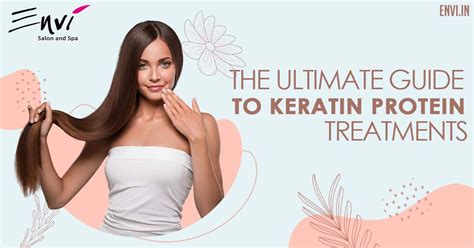Understanding Hair Protein Treatments
Protein treatments are essential for maintaining strong, healthy hair. They work by replenishing the hair’s natural protein structure, which is composed of keratin. Keratin is responsible for giving hair its strength, elasticity, and shine.

Benefits of Protein Treatments
Regular protein treatments can offer numerous benefits for hair, including:
- Improved strength: Protein strengthens hair fibers, making them less prone to breakage and split ends.
- Enhanced elasticity: Protein helps hair stretch without breaking, reducing tangles and knots.
- Increased shine: Protein smoothes the hair cuticle, enhancing its ability to reflect light and create a glossy appearance.
- Reduced frizz: Protein seals the hair cuticle, preventing moisture loss and reducing frizziness.
- Improved manageability: Protein makes hair easier to detangle, style, and brush.
Types of Protein Treatments
There are several types of protein treatments available, each with its unique properties:
-
Traditional Protein Treatments: These treatments contain a high concentration of protein and are typically applied to dry hair. They penetrate the hair shaft and repair damaged areas, resulting in stronger, more resilient hair.
-
Leave-In Protein Treatments: These treatments contain a lower concentration of protein and can be left in the hair for a long period of time. They provide ongoing nourishment and protection, helping to prevent future damage.
-
Shampoo and Conditioner with Protein: Many shampoos and conditioners now contain protein, offering a convenient way to incorporate protein into your hair care routine. They gently cleanse and condition the hair, while also replenishing lost protein.
How to Choose the Right Protein Treatment
Choosing the right protein treatment depends on the specific needs of your hair. Consider the following factors:
- Hair damage level: If your hair is severely damaged, a traditional protein treatment may be more effective.
- Hair texture: Fine hair may benefit more from leave-in protein treatments, while thick hair may require a stronger traditional treatment.
- Frequency of use: If you have healthy hair, a once-a-month protein treatment may be sufficient. If your hair is damaged, you may need more frequent treatments.
How to Apply a Protein Treatment
Applying a protein treatment is a relatively simple process:
- Wash and dry your hair: Start by washing your hair with a clarifying shampoo to remove any buildup. Towel-dry your hair, but leave it damp.
- Apply the protein treatment: Apply the treatment evenly to your damp hair, starting from the ends and working your way up to the roots.
- Cover your hair: Use a plastic cap to cover your hair and create a warm environment. This will help the treatment penetrate the hair shaft.
- Leave on for the recommended time: Most protein treatments require you to leave them on for 15-30 minutes.
- Rinse thoroughly: Rinse your hair thoroughly with warm water to remove the treatment.
- Condition your hair: Apply a conditioner to your hair to nourish and seal in the benefits of the protein treatment.
Common Mistakes to Avoid
To maximize the effectiveness of your protein treatment, avoid these common mistakes:
- Overusing protein: Excessive protein treatments can overload your hair, making it stiff and brittle.
- Using harsh detergents: Avoid using harsh detergents before or after a protein treatment, as they can strip your hair of natural oils.
- Sleeping with a wet protein treatment: Sleeping with a wet protein treatment can cause the treatment to harden on your hair, making it difficult to remove.
- Not rinsing thoroughly: Leaving protein residue on your hair can weigh it down and make it look greasy.
FAQs
1. How often should I do a protein treatment?
The frequency of protein treatments depends on your hair type and damage level. For healthy hair, once a month is sufficient. For damaged hair, you may need more frequent treatments.
2. Can protein treatments damage my hair?
Excessive protein treatments can damage hair by overloading it with protein, making it stiff and brittle.
3. What are the signs of protein overload?
Signs of protein overload include hair that is stiff, inelastic, and brittle. It may also break easily and feel straw-like to the touch.
4. How can I repair protein overload?
If you experience protein overload, you can use a clarifying shampoo to remove excess protein from your hair. You may also need to use a deep conditioner to replenish moisture and restore hair’s health.
5. Can I use protein treatments on chemically treated hair?
Yes, you can use protein treatments on chemically treated hair. However, it’s important to use a gentler treatment and to avoid overusing it.
6. Are all protein treatments created equal?
No, protein treatments vary in their ingredients, concentration, and effectiveness. It’s important to choose a treatment that is appropriate for your hair type and needs.
Conclusion
Protein treatments are an essential part of a healthy hair care routine. By replenishing the hair’s natural protein structure, they can improve strength, elasticity, shine, and manageability. Choosing the right protein treatment and following the instructions carefully can help you achieve beautiful, healthy hair.
